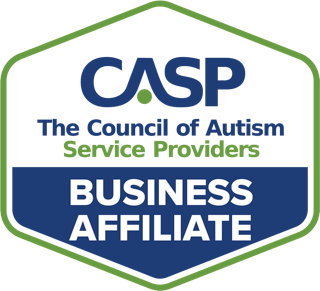Providing quality care is essential for any organization working to improve the lives of individuals with autism spectrum disorder (ASD). But, in the field of applied behavior analysis (ABA), the stakes are even higher. As ABA organizations continue to grow and offer their services, it’s crucial that they prioritize evidence-based practices and continually evaluate their service quality to ensure they are delivering the best possible care. To help organizations achieve these goals, experts in the field have outlined practical steps to implement evidence-based practices in their services.
In this article, we will delve into the publication “Exploring Quality in the Applied Behavior Analysis Service Delivery Industry” (Silbaugh & Fattal, 2021) and explore the six practical steps that ABA organizations can take to improve the quality of their services. These steps will help ABA organizations adopt higher standards and create quality-dependent key performance indicators that prioritize both financial growth and clinical standards attainment. By doing so, ABA organizations can set themselves up for success and promote positive outcomes for individuals with ASD and their families.
Join us as we explore these crucial steps in detail and learn how they can help ABA organizations establish a new standard of excellence in the field.
1) Strategic Planning
ABA organization leaders should engage in strategic planning that focuses on identifying key performance indicators (KPIs) and the strategies necessary to achieve them. This process should include reflecting on the organization’s accomplishments and challenges, determining its mission and values, conducting a SWOT analysis, setting long-term goals, and creating an action plan and system for evaluating success.
2) Quality-Dependent Key Performance Indicators (QD-KPIs)
Organizations can establish QD-KPIs, which are KPIs tied to professional and consumer performance and outcome standards. These QD-KPIs ensure that both financial growth and clinical standards attainment are prioritized simultaneously. The authors suggest using Patrick Thean’s (2008) red/yellow/green success criteria to assess whether the organization is meeting internal standards.
3) Executive Dashboards
To monitor progress towards QD-KPIs, organizations should establish executive dashboards that can be used to track progress on established initiatives, goals, and actions. There are many different dashboard options available, and organizations can seek software and consultation from companies like Rethink Behavioral Health.
4) Professional and Consumer Standards
ABA organizations should adopt external and/or create internal professional and consumer performance and outcome standards as a basis for QD-KPIs. Internal standards can be developed through in-house surveys that measure important constructs, such as caregiver perceptions of benefits, staff skill level, and treatment plan oversight, as recommended by Silbaugh & Fattal (2021). Organizations can also use external standards, such as those developed by the BHCOE, and publish results routinely on their website.
5) TQM Approach
Total Quality Management (TQM) is a systematic approach to implementing organizational improvements. It is a consumer-focused, process-centered approach where all employees are driven by the values and mission and contribute to meeting the QD-KPIs. TQM also involves ongoing policy and procedure improvements and decision-making based on performance measures. Deming’s 14 Points for Total Quality Management is a great place to start when implementing TQM in an ABA organization.
6) Quality Management and Continuous Improvement
ABA organizations should establish a quality management system and continuous improvement process to ensure they are constantly improving the quality of services they provide. This can include regular assessments and evaluations of services and QD-KPI targets, setting goals for improvement, and taking action to address areas that need improvement (e.g. processes, procedures, or staffing). Organizations can also seek accreditation from organizations that specialize in quality management, such as the Behavioral Health Center of Excellence (BHCOE) or Council of Autism Service Providers (CASP). Publicly posting performance data can help organizations hold themselves accountable to these quality standards.
Elevating ABA Care with RethinkBH
Providing high-quality care is crucial for any organization working to improve the lives of individuals with autism spectrum disorder (ASD). By adopting evidence-based practices and prioritizing quality care, ABA organizations can set themselves up for success and promote positive outcomes for individuals with ASD and their families. To help ABA organizations achieve these goals, Rethink offers a comprehensive practice management and data collection platform that can help organizations implement evidence-based practices and prioritize quality care.
To learn how Rethink’s platform can help ABA organizations establish a new standard of excellence in the field, and promote positive outcomes for individuals with ASD and their families, request a demo today.
Don’t miss out on the opportunity to provide the best possible care and build a stronger, more reputable industry.
References
El Fattal, R. & Silbaugh, B.C. (2021). Exploring quality in the applied behavior analysis service delivery industry. Behavior Analysis in Practice, 15, 571-590.
Thean, P. (2008). Executing without drama. Hudson House.










